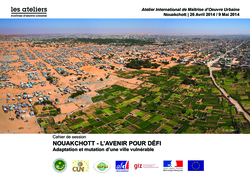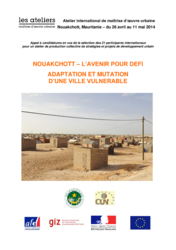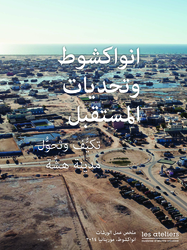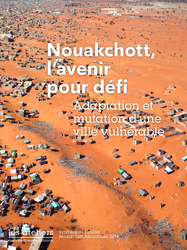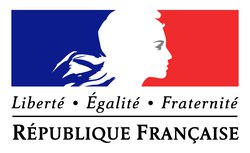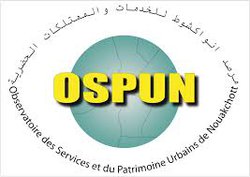Nouakchott, the future as a challenge
Nouakchott was created ex-nihilo in 1960 as the capital of Mauritania, and has since known an exponential growth, from an original count of 500 inhabitants (at the time of Independence) to numbers now over a million, encompassing around a third of the national population. This is partly due to the droughts of the 1970s, causing thousands of nomads to head towards the new capital city. Ever since, Nouakchott has acted as the major activity center for the country and has spread in an uncontrolled, anarchic way until its star-formation covers about 30km in diameter, and has defeated successive tries for urban plannification schemes.
Fifty or so years after the creation of Nouakchott, urban authorities choose to look into the future of the Mauritanian capital. The Urban Community of Nouakchott is studying possible directions in which to pursue urban development in order to tackle he multiple environmental, social, and economic challenges facing the city, such as :
- An ever-increasing population growth An important urban sprawl fed by strong property speculation * Threats to the environment : Flood risk and sand build-ups due to site specificities – highly vulnerable to human actions and climate change Insufficient infrastructure and engineering improvements (in terms of water purveyance, waste treatment, electricity networks and garbage handling) born from national and especially local urban poverty. * A complex urban governance system, born of the competing nature of the central government and the municipal authorities, born also of overlapping competence domains, of incomplete decentralization processes and to insufficient training of experts and elected officials both. * A young capital city with little urban identity, that is barely being appropriated by recently settled inhabitants that carry with them strong traces of their rural cultures.
The May 2014 session of Les Ateliers will brainstorm the future of Nouakchott, its possible adaptations and mutations to tackle the aforementioned multiple challenges. Les Ateliers will therefore consider Nouakchott as (i) an urban network capable of facing environmental challenges, (ii) a regional metropolis midway between the Maghreb and Sub-Saharan Africa, trying to balance future projections and current growth, and (iii) a capital city with its eyes on the future, focused on guaranteeing every citizen’s well-being.
staff
Armelle Choplin - Geographer, Senior Lecturer Institut Français d'Urbanisme and Frédérique Vincent - Engineer, Director Institut Supérieur en Ingénierie et Gestion de l'Environnement (MINES ParisTech - ISIGE)




